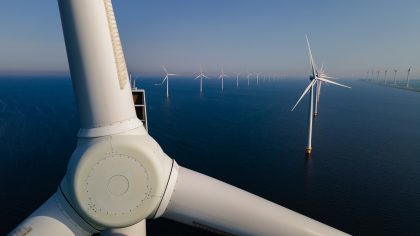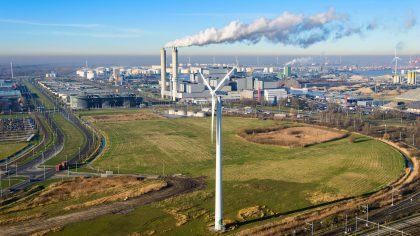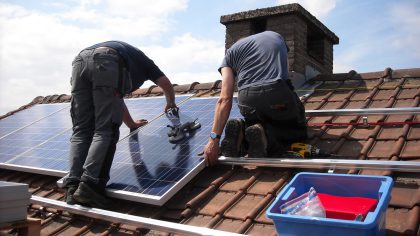The reference technology is a combined cycle gas turbine (CCGT). Post-combustion capture is also applicable to large scale gas boilers, but these are not a core focus of this factsheet. There are different requirements for flue gas cleaning in preparation for CO2 capture (dust filters, NOx removal, sulphur scrubbers, etc.) which will influence performance and costs. The performance and costs ranges are considered to be sufficiently close for the variety of gaseous carbon-rich fuels to group them together in a single factsheet.
Post-combustion capture can be attached to an existing power plant or incorporated in the design of a new plant, the latter with potential for increased efficiency and lower total costs. The focus of this factsheet is add-on capture for a stand-alone plant, regardless of age or feed stock, and therefore does not take into account potential efficiency gains or cost reductions from integrated design of new plants.
Post-combustion CCS generally entails capture from flue gases with low CO2 concentrations. In the case of gaseous fuels, concentrations are generally below 10% (IPCC, 2005; IEAGHG, 2013). There are a variety of techniques that can be used to separate CO2 from the flue gas, including the use of sorbents/solvents, membranes and distillation machinery. Chemical solvents, such as Mono-Ethanolamine (MEA), are the most commonplace technique for post-combustion capture for power plants (IPCC 2005), therefore they are considered the default for this factsheet.
Compression and dehydration of CO2 is part of the capture process. CO2 pressure after capture varies from 8 MPa to 20 MPa in the studies cited here. At these pressure levels it is possible to transport the CO2 through low-pressure pipelines (maximum pressure of 4.8 MPa) or high-pressure pipelines (minimum of 9.6 MPa; see IPCC, 2005) with minimal additional (de)compression required. It is therefore assumed that no additional compression step is required after capture to prepare the CO2 for pipeline transport. If CO2 is transported in liquid state, then additional compression will be required.
All information in the datasheets is also available in ESDL (Energy System Description Language). You can find them in the Energy Data Repository (EDR).


